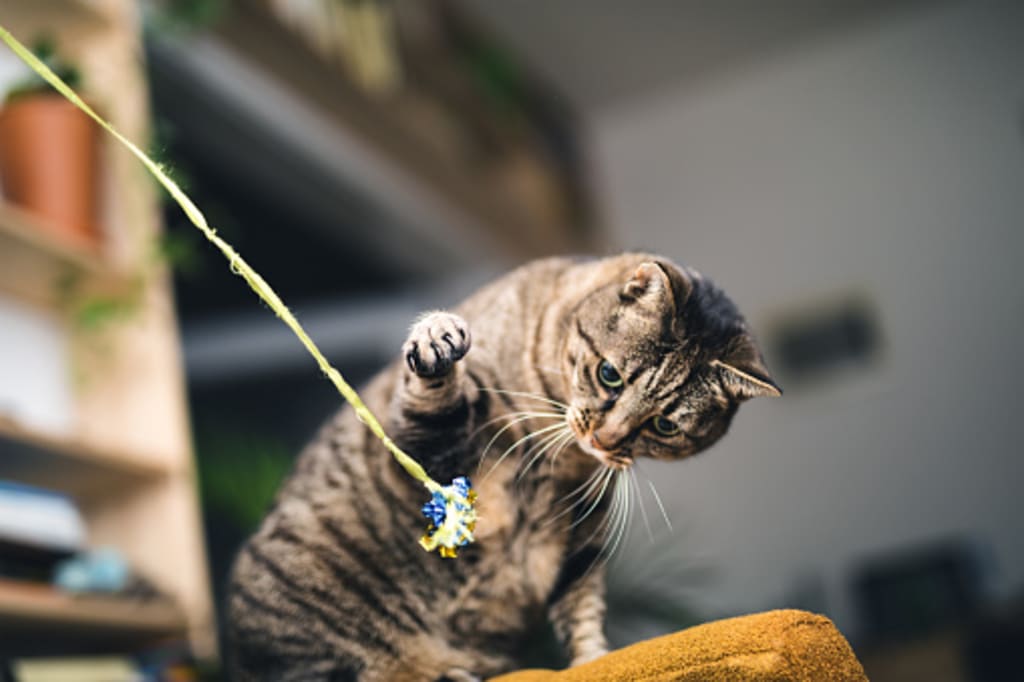Reasons for cat's weird behavior
The strange behavior of cats

Cats possess an inherent charm and endearing quality that has garnered them immense popularity. This is evident from the billions of views and millions of YouTube videos capturing their delightful antics—pouncing, bouncing, climbing, cramming, stalking, clawing, chattering, and purring. It is undeniable that cats provide endless entertainment. However, their behaviors can often be both amusing and puzzling, leaving us to wonder, "Why do cats do that?" Throughout history, cats have occupied a unique position as both solitary predators of smaller animals and potential prey for larger carnivores. The survival of their species relied on a repertoire of instinctual behaviors that we continue to observe in both wild and domestic cats today. These behaviors are deeply ingrained in their nature.
Cats' entertaining actions often stem from their predatory instincts. Their pouncing and stalking behaviors, for example, harken back to their hunting prowess. Cats may exhibit these behaviors even when engaging with toys or in play, as it allows them to hone their skills and maintain their natural instincts. On the other hand, cats' sometimes elusive and aloof nature can be attributed to their history as potential prey. Being cautious and vigilant helps them stay safe and avoid predators. Even domestic cats retain this instinct, manifesting in behaviors such as hiding in secluded spots or being wary of unfamiliar surroundings. In essence, the captivating and sometimes puzzling behaviors of cats can be traced back to their evolutionary journey as both hunters and potential prey. By understanding and appreciating these instincts, we can deepen our connection with our feline companions and provide them with a fulfilling and enriching environment.
The behaviors exhibited by your house cat, whom we'll refer to as Luna, may appear perplexing at times. Luna's behaviors, shaped by millions of years of natural selection, reveal her innate qualities as a skilled predator. Cats' remarkable muscular structure and balancing abilities have allowed them to excel at climbing, surveying their territory, and detecting potential prey. Although Luna no longer relies on these skills to find her meals in a domestic setting, her evolutionary heritage drives her to observe her surroundings from high perches like bookcases. Wild cats are known for their opportunistic hunting nature, adapting their eating patterns to consume small prey multiple times throughout the day. Luna's preference for chasing toys and consuming small meals aligns with this behavior. Additionally, the tendency to explore containers and investigate openings can be attributed to the curiosity that ensured the survival of her species in the wild. While Luna's actions may seem puzzling at home, they are deeply ingrained in her genetic makeup as a skilled predator. Recognizing and honoring these instincts enables us to provide Luna with an environment that fulfills her evolutionary needs and promotes her overall well-being.

In the wild, the sharp claws of cats served crucial purposes such as climbing, hunting, and self-defense. Scratching on nearby surfaces allowed them to keep their claws well-conditioned and sharp. This behavior also helped them stretch their back and leg muscles while providing some stress relief. Therefore, it's important to understand that Luna's tendency to scratch and potentially damage your couch, chair, ottoman, pillows, curtains, and other items in her environment is not a result of her hating those objects. Instead, she engages in this behavior to maintain her claws in optimal condition, just as her ancestors did to ensure their survival in the wild. To address this natural instinct, providing Luna with appropriate scratching surfaces, such as scratching posts or boards, can redirect her behavior and save your furniture from further damage. By providing her with an outlet for scratching, you allow her to engage in this instinctual behavior without causing harm to household items.
As animals that were once preyed upon, cats evolved remarkable abilities to avoid being caught by predators. In the wild, the cats that excelled at eluding their predators had a higher chance of survival and passing on their genes. This evolutionary history explains why Luna, in your home today, demonstrates expertise in squeezing into small spaces and seeking out unconventional hiding spots. It also sheds light on her preference for a clean and odor-free litter box. By keeping her scent concealed, Luna minimizes the risk of attracting attention from potential predators that may be in the vicinity.

Considering all that we know about cats, it remains true that one of their most prevalent behaviors continues to be a captivating mystery. Cats purr for various reasons, including happiness, stress, and hunger. Interestingly, the frequency range of their purrs, typically between 25 and 150 hertz, falls within a range that has been associated with promoting tissue regeneration. This raises the possibility that while Luna's purring makes her an excellent nap companion, it could also serve a therapeutic purpose by aiding in the healing of her muscles and bones, and potentially even benefiting those in close proximity, including yourself. Although the precise mechanisms and benefits of purring are still not fully understood, the healing potential of this behavior adds another fascinating dimension to the already intriguing nature of cats. It highlights the remarkable adaptations and abilities that have evolved within this species over time.
Cats have evolved as both solitary predators and stealthy prey, retaining instincts from their ancestors. These instincts explain their peculiar behaviors, as they view our homes as their personal jungles. Cats explore, hunt (even playfully), and seek hiding spots. Their perception of us varies, seeing us as larger cats competing for resources or less adept predators to outsmart. Cats have their unique perspectives, and though we can't fully understand their thoughts, our relationship is built on companionship, trust, and affection.
About the Creator
Prajakta Surve
Just giving a try to writing in my favorite fields and genre. Hope you like it!





Comments
There are no comments for this story
Be the first to respond and start the conversation.